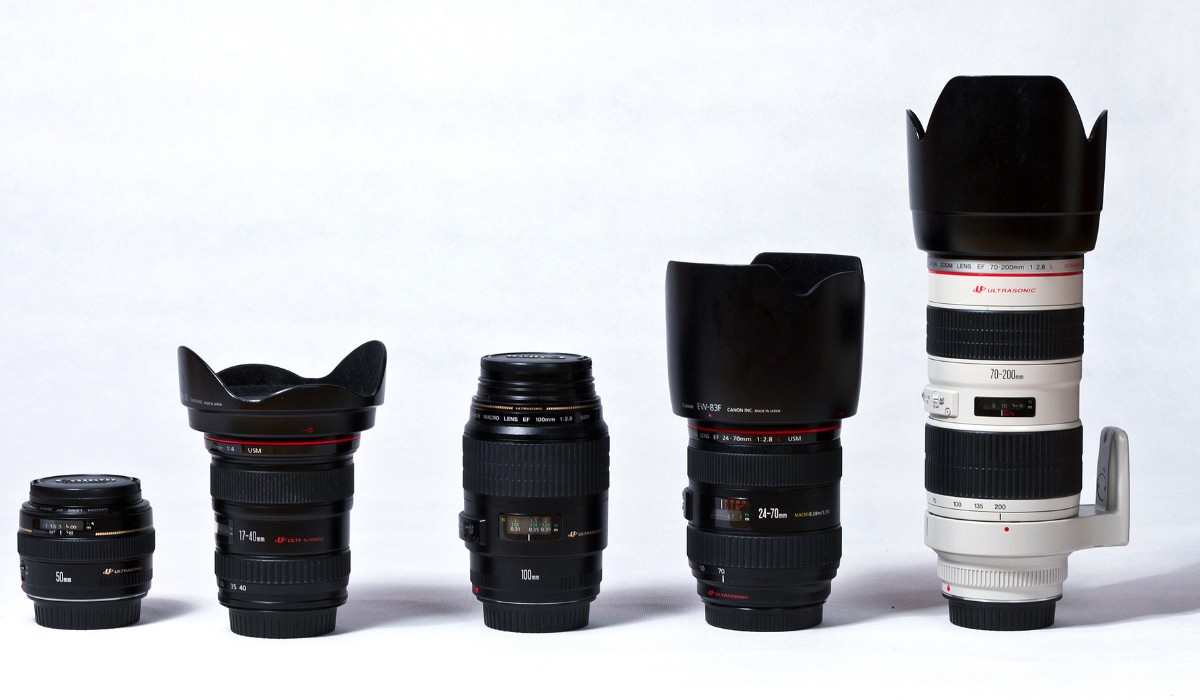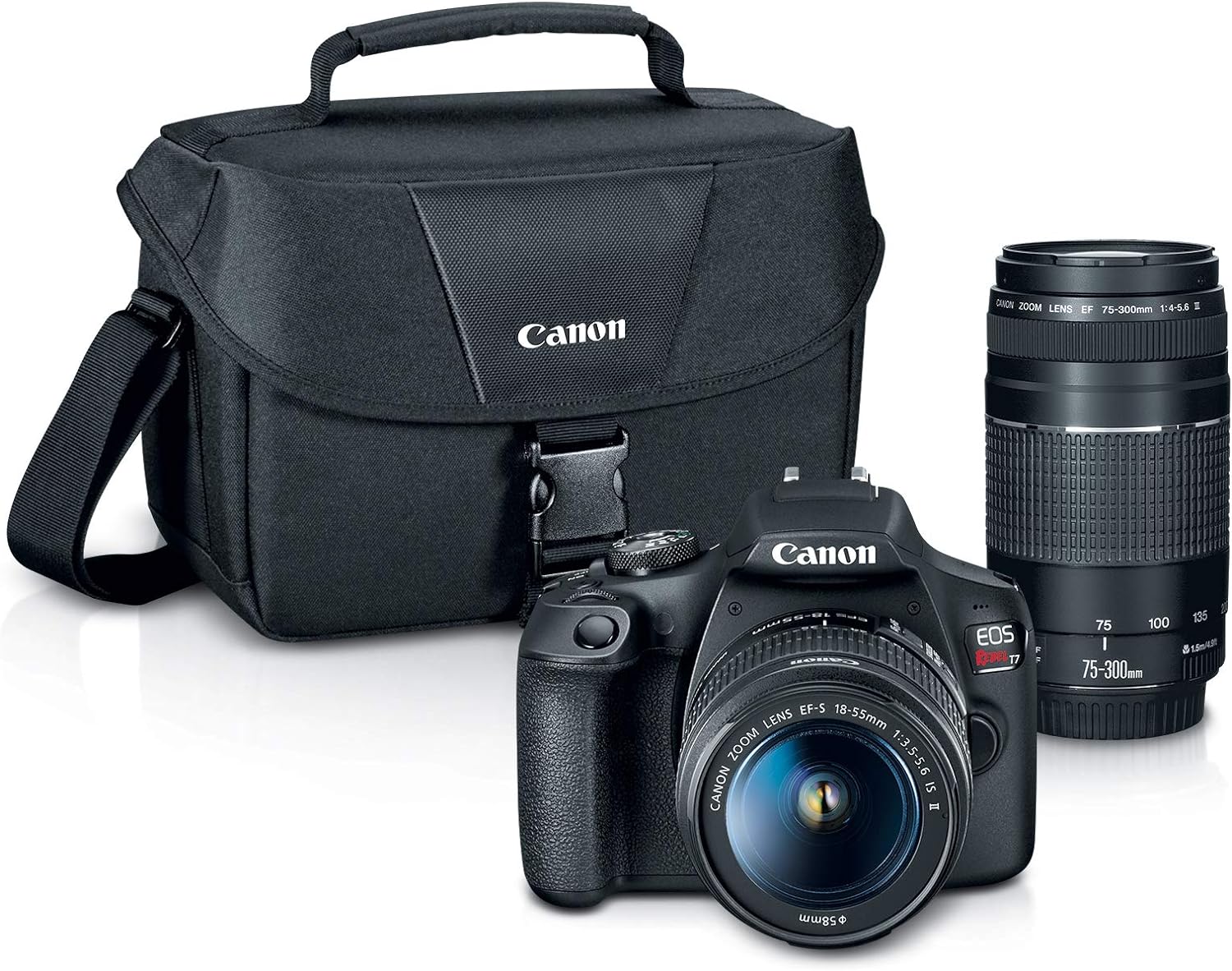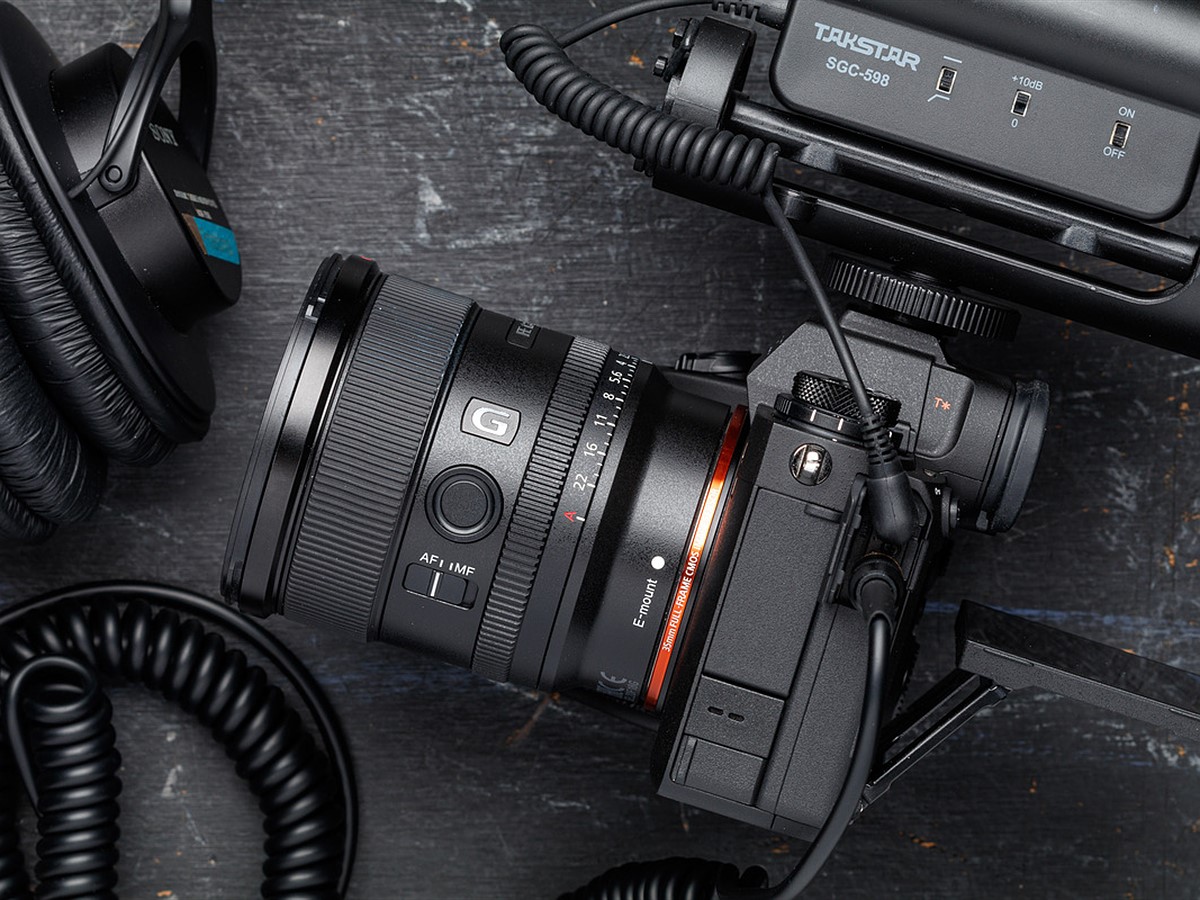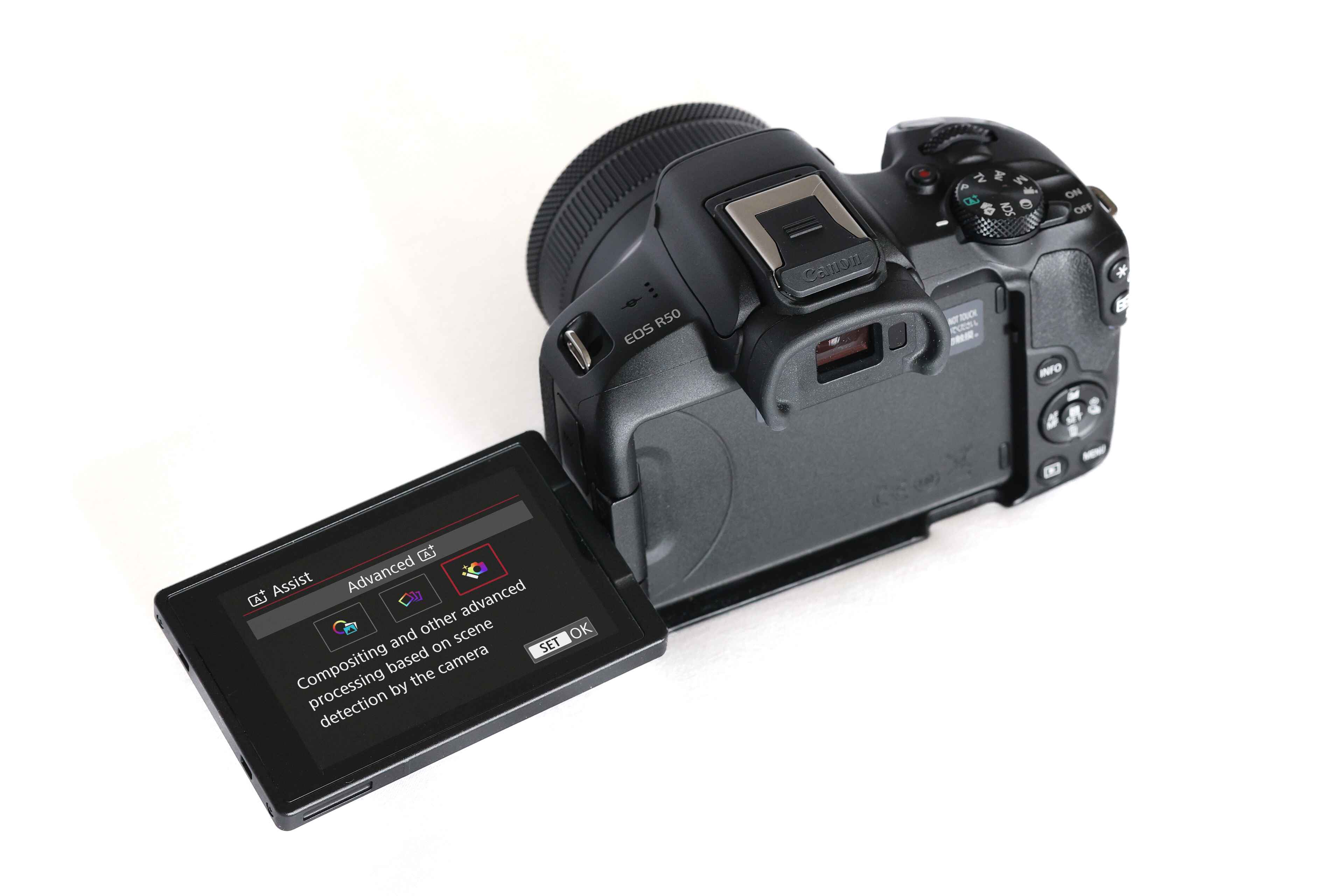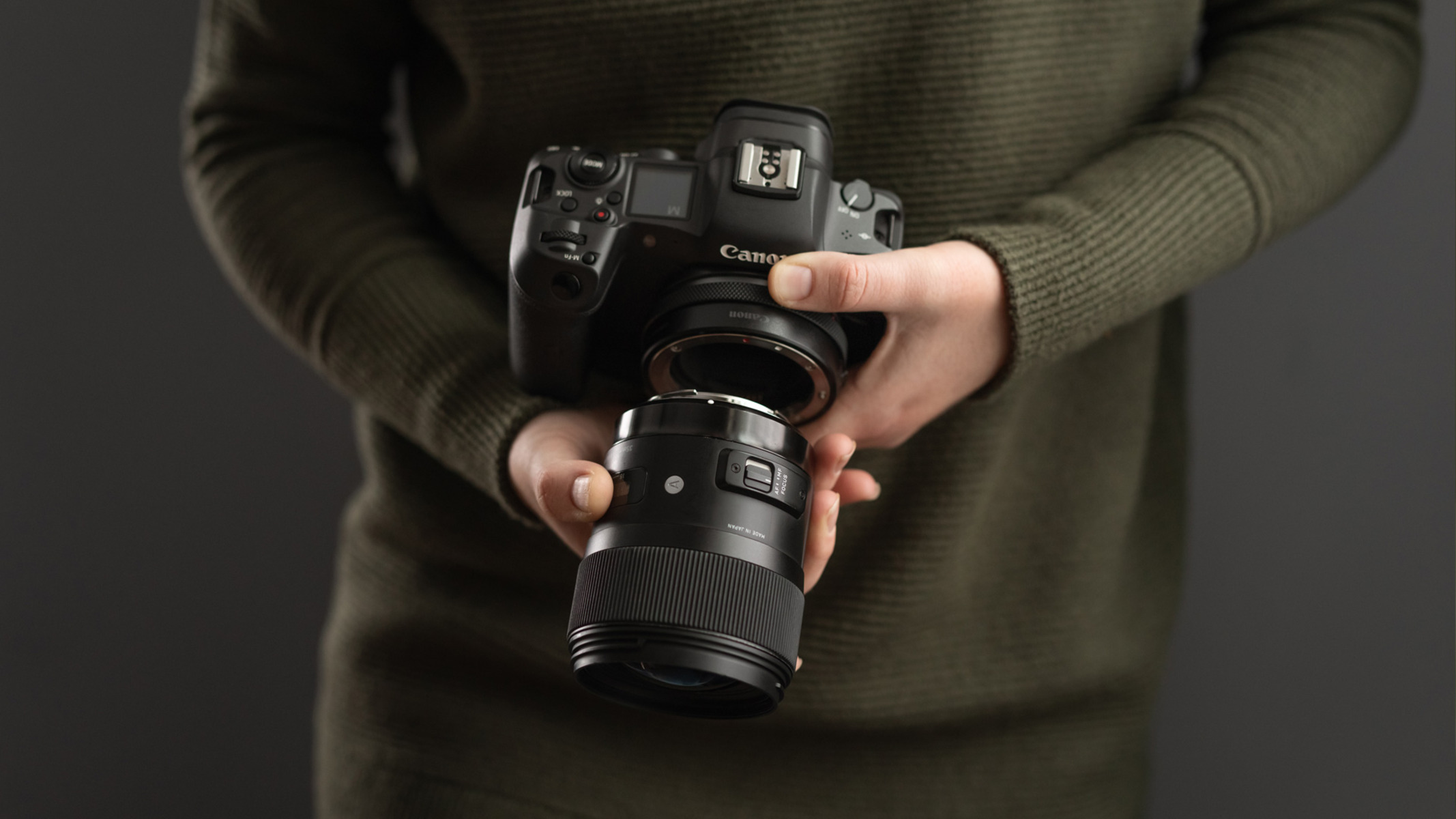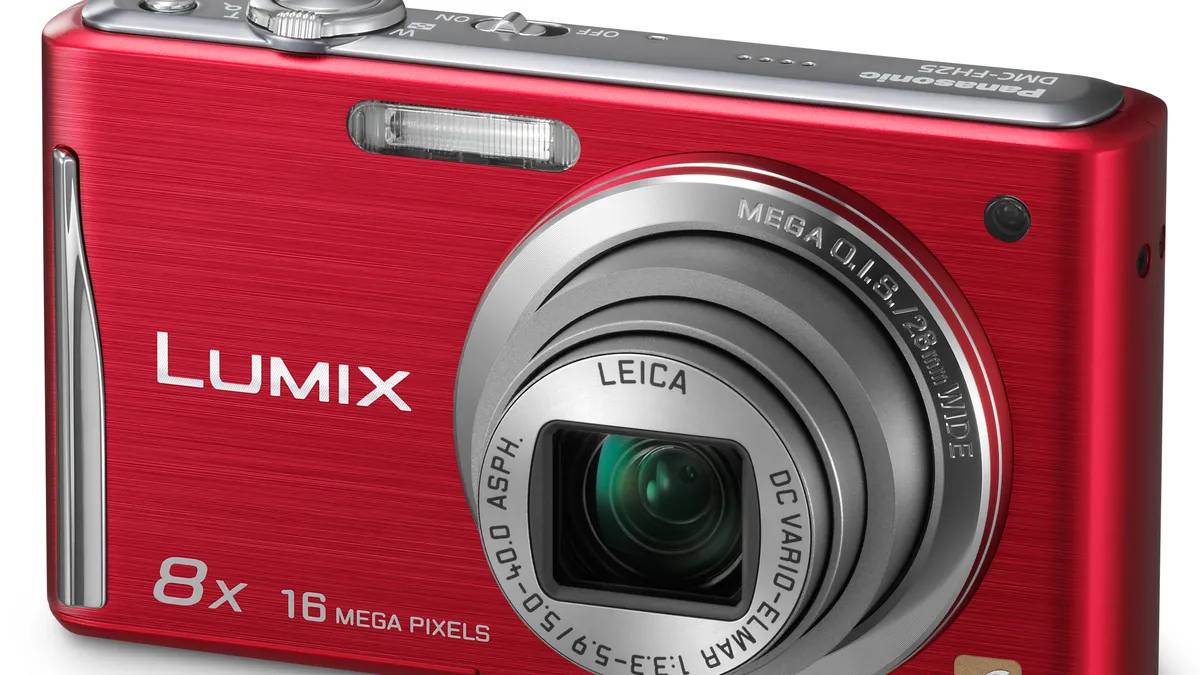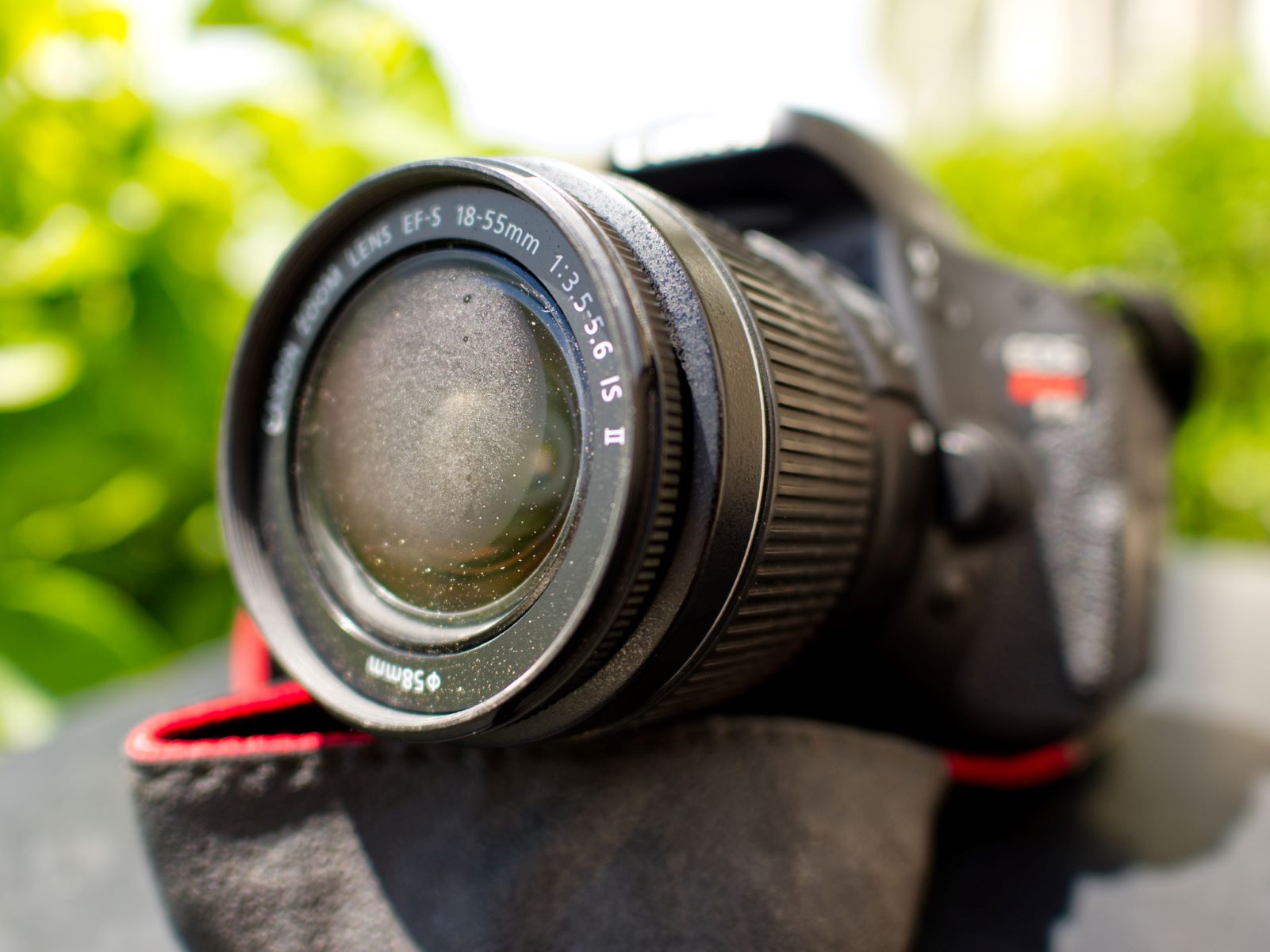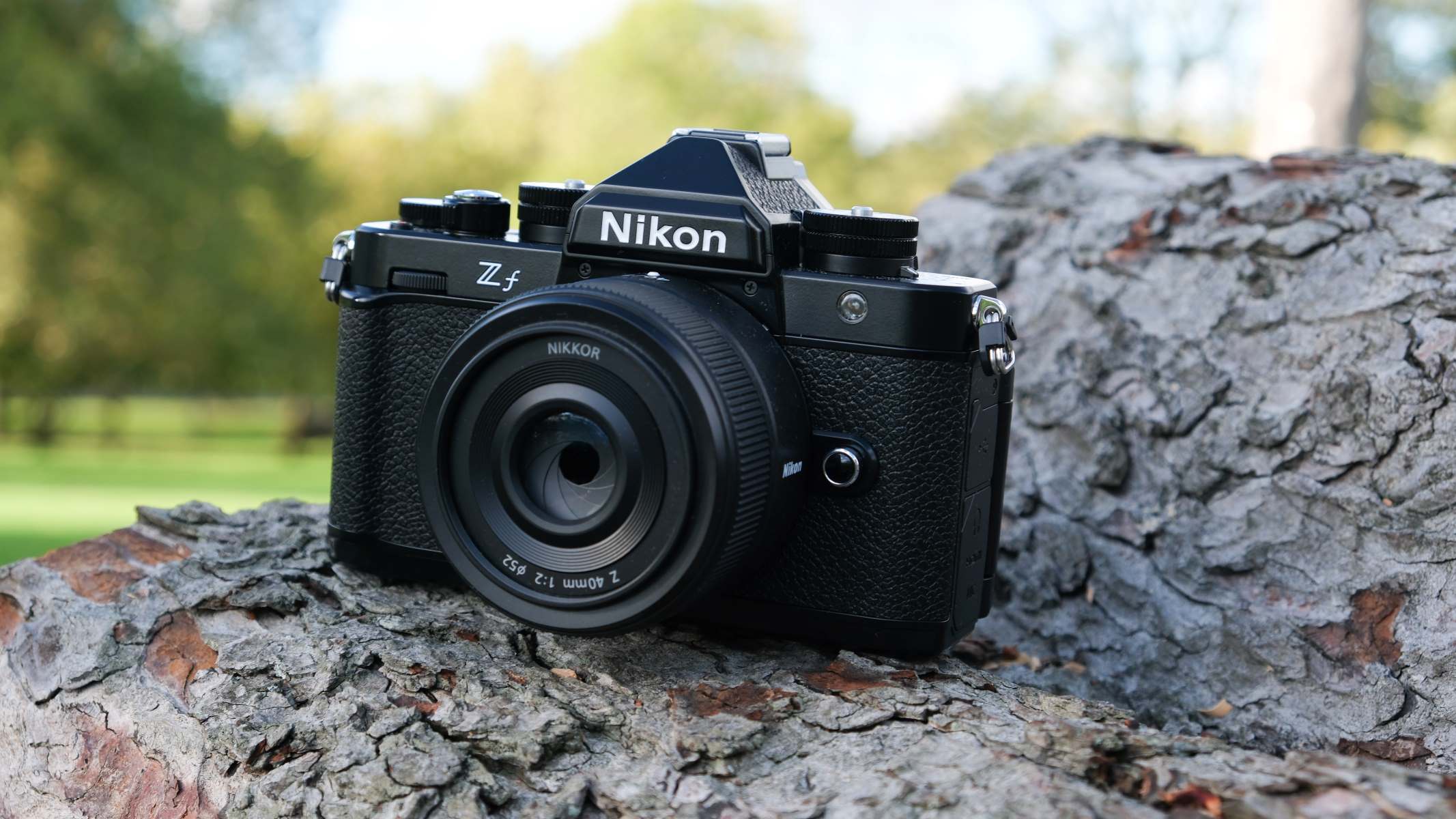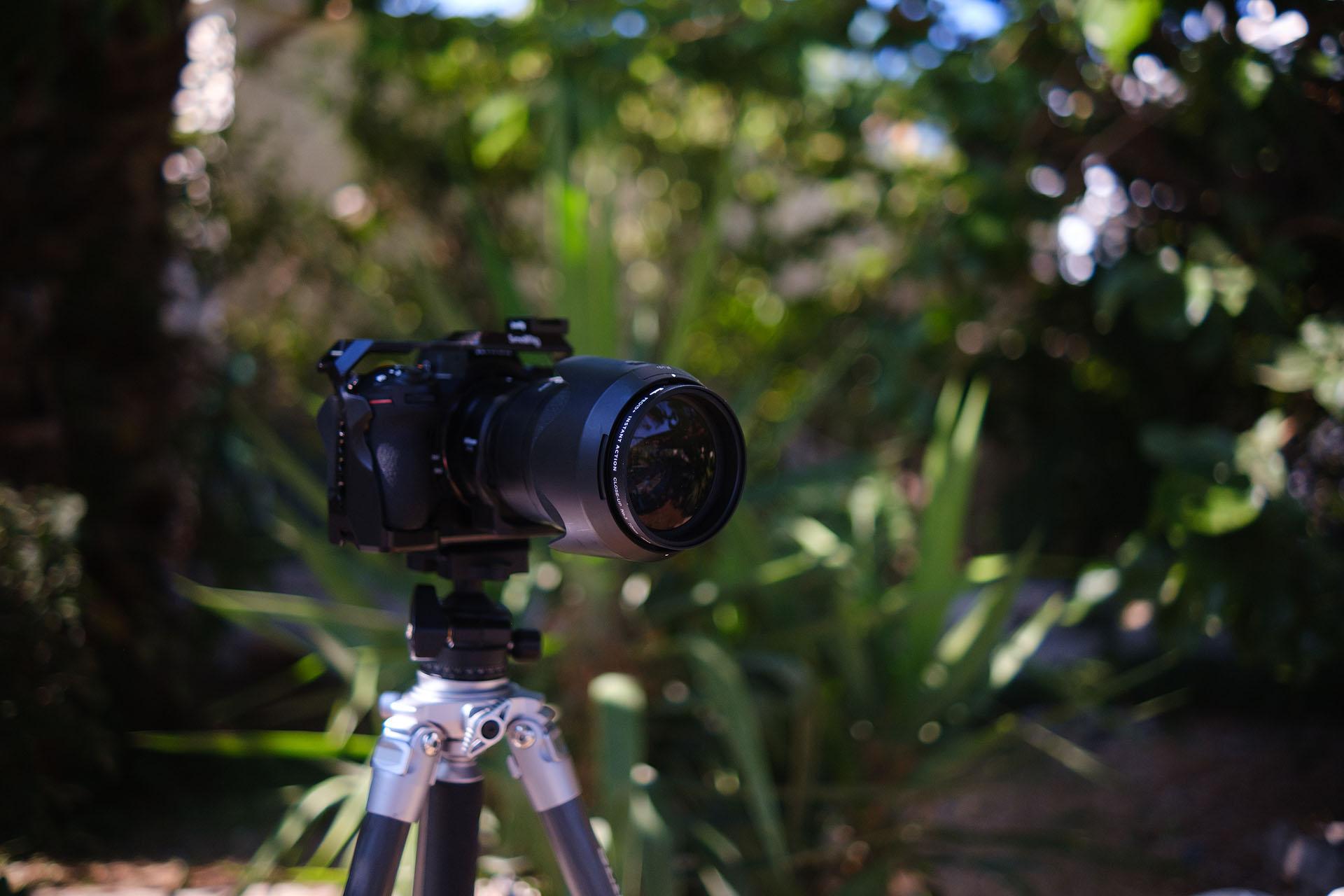Introduction
So, you've finally taken the plunge and invested in a DSLR camera. Congratulations! You're now on your way to capturing stunning, professional-quality images. However, no camera is complete without a high-quality lens. The lens you choose can significantly impact the overall quality and style of your photographs. With a myriad of options available, selecting the right lens might seem like a daunting task. But fear not! This comprehensive guide will walk you through the various types of DSLR camera lenses, helping you make an informed decision on the best lens for your specific needs.
Whether you're an amateur photographer looking to upgrade your kit lens or a seasoned professional seeking to expand your collection, understanding the different types of DSLR lenses is crucial. From prime lenses to zoom lenses, wide-angle to telephoto, and macro lenses, each type offers unique features and benefits. By delving into the specifics of each lens category, you'll gain valuable insights into their respective strengths and ideal applications.
By the end of this guide, you'll be equipped with the knowledge to confidently select the perfect lens for your photography endeavors. So, let's embark on this enlightening journey through the world of DSLR camera lenses and discover the endless possibilities they offer for capturing awe-inspiring images.
Understanding DSLR Camera Lenses
Before delving into the specific types of DSLR camera lenses, it’s essential to grasp the fundamental principles that govern their functionality and design. A DSLR lens is much more than a mere accessory; it’s the conduit through which your creative vision materializes into captivating photographs. Understanding the key aspects of lenses will empower you to make informed choices and leverage their capabilities to the fullest.
One of the primary considerations when evaluating a lens is its focal length. This crucial parameter dictates the angle of view and magnification of the captured image. Lenses with shorter focal lengths encompass a wider field of view, making them ideal for landscape photography and capturing expansive scenes. On the other hand, longer focal lengths result in magnified images, making them well-suited for portrait photography and capturing distant subjects with intricate details.
Another vital aspect to comprehend is the concept of aperture. The aperture of a lens regulates the amount of light that enters the camera, thereby influencing exposure and depth of field. Wider apertures (lower f-stop values) facilitate shallower depths of field, enabling striking subject isolation and creamy bokeh in the background. Conversely, narrower apertures (higher f-stop values) yield greater depth of field, ensuring that more elements in the scene are in sharp focus.
Furthermore, the construction and quality of lens elements significantly impact the overall image quality. Premium lenses incorporate specialized glass elements, coatings, and precision engineering to minimize aberrations, enhance sharpness, and deliver superior optical performance. Understanding these technical nuances will aid in discerning the qualitative disparities among various lenses and making well-informed purchasing decisions.
By comprehending these foundational aspects of DSLR camera lenses, you’ll be better equipped to appreciate the distinct characteristics of each lens type and discern how they align with your photographic objectives. Armed with this knowledge, you’re poised to explore the diverse array of lenses available and harness their potential to elevate your photography to new heights.
Prime Lenses
Prime lenses are revered for their simplicity, optical excellence, and remarkable low-light performance. Unlike zoom lenses, which offer variable focal lengths, prime lenses have a fixed focal length, meaning they do not zoom in or out. This inherent limitation fosters a unique approach to composition, compelling photographers to physically reposition themselves to frame the desired shot. While this may seem restrictive at first, it cultivates a deliberate and contemplative photographic process, ultimately enhancing creativity and precision.
One of the standout attributes of prime lenses is their wide maximum aperture, often ranging from f/1.2 to f/2.8 or even wider in some cases. This expansive aperture enables exceptional low-light performance, making prime lenses the go-to choice for indoor, nighttime, and portrait photography. The ability to achieve a shallow depth of field with striking background blur (bokeh) further accentuates the subject, adding a captivating dimension to the image.
Moreover, the fixed focal length of prime lenses encourages photographers to refine their composition and perspective, fostering a deeper connection with the subject and scene. This intentional approach often leads to more compelling and impactful photographs, as it necessitates careful consideration of framing and subject placement.
Additionally, prime lenses are renowned for their optical prowess, delivering exceptional sharpness, contrast, and minimal distortion. The absence of complex zoom mechanisms and the singular focus on a specific focal length allow manufacturers to optimize the optical design, resulting in unparalleled image quality.
Overall, prime lenses offer a compelling blend of optical excellence, low-light performance, and creative stimulation. Whether you’re capturing exquisite portraits, immersive street scenes, or atmospheric low-light environments, a prime lens can be a versatile and indispensable tool in your photographic arsenal.
Zoom Lenses
Zoom lenses are prized for their versatility and convenience, offering a variable focal length range within a single lens. This flexibility empowers photographers to seamlessly adjust their composition and framing without physically repositioning themselves, making zoom lenses an ideal choice for capturing a wide array of subjects and scenarios.
One of the primary advantages of zoom lenses is their adaptability to diverse shooting situations. Whether you’re photographing expansive landscapes, distant wildlife, or intimate portraits, a zoom lens provides the flexibility to frame the shot precisely as desired. This versatility is particularly advantageous in dynamic or fast-paced environments where the luxury of repositioning may be limited.
Furthermore, the convenience of a zoom lens eliminates the need to carry multiple prime lenses, streamlining your gear and enhancing mobility. This can be especially beneficial for travel and documentary photography, where space and weight considerations are paramount. The ability to swiftly transition between different focal lengths empowers photographers to capture varied perspectives and compositions without interrupting the creative flow.
Modern zoom lenses are engineered with advanced optics and precision mechanisms to deliver exceptional image quality across the entire focal length range. While earlier iterations of zoom lenses may have exhibited optical compromises, contemporary designs strive to minimize distortions, aberrations, and loss of sharpness, ensuring consistent performance throughout the zoom range.
Despite their inherent convenience and adaptability, zoom lenses typically have a narrower maximum aperture compared to prime lenses, especially in the telephoto range. However, advancements in lens technology have resulted in high-quality zoom lenses with commendably wide apertures, catering to the demands of low-light photography and achieving compelling background blur.
In essence, zoom lenses offer unparalleled flexibility and convenience, making them indispensable tools for photographers who seek adaptability without compromising on image quality. Whether you’re exploring vast landscapes, capturing distant subjects, or documenting everyday moments, a well-crafted zoom lens can be a versatile and reliable companion in your photographic pursuits.
Wide Angle Lenses
Wide angle lenses are revered for their expansive field of view, making them indispensable for capturing vast landscapes, architectural marvels, and immersive environmental portraits. Characterized by focal lengths typically ranging from 14mm to 35mm on full-frame cameras, wide angle lenses enable photographers to encompass a broad expanse of the scene within a single frame, fostering a sense of grandeur and spatial context.
One of the defining features of wide angle lenses is their ability to emphasize perspective and depth, especially when used in close proximity to the subject. This unique characteristic allows photographers to create dramatic and dynamic compositions, accentuating leading lines, converging planes, and spatial relationships within the frame. Whether you’re photographing urban skylines, majestic interiors, or sweeping natural vistas, a wide angle lens can imbue your images with a captivating sense of scale and immersion.
Beyond their utility in expansive landscapes, wide angle lenses excel in confined or tight spaces, offering the capacity to capture encompassing views without the need for excessive distance from the subject. This versatility makes them invaluable for interior photography, real estate documentation, and environmental portraiture, where conveying spatial context and encompassing the surroundings are paramount.
Moreover, wide angle lenses are prized for their ability to accentuate foreground elements, infusing a sense of depth and dimension into the composition. By juxtaposing prominent foreground elements with distant subjects, photographers can create visually compelling images that draw the viewer into the scene, fostering an immersive and engaging visual experience.
While wide angle lenses excel in capturing expansive vistas and spatial context, they also lend themselves to creative experimentation. By leveraging the unique distortion and perspective effects inherent to wide angle optics, photographers can craft visually arresting images that challenge conventional compositional norms, adding a distinctive and artistic flair to their work.
Overall, wide angle lenses are indispensable tools for photographers who seek to convey a sense of scale, depth, and immersive perspective in their images. Whether you’re exploring sweeping landscapes, documenting architectural marvels, or delving into creative visual storytelling, a wide angle lens can be a transformative and enriching addition to your photographic repertoire.
Telephoto Lenses
Telephoto lenses are renowned for their exceptional magnification capabilities, making them indispensable for capturing distant subjects with remarkable clarity and detail. Characterized by focal lengths typically exceeding 70mm and extending to several hundred millimeters, telephoto lenses enable photographers to bring distant scenes closer, making them ideal for wildlife photography, sports events, and candid portraiture.
One of the primary advantages of telephoto lenses is their ability to isolate and emphasize distant subjects, effectively compressing the perceived distance between elements within the frame. This compression effect accentuates the subject against the background, creating visually compelling images with a pronounced sense of depth and intimacy. Whether you’re photographing wildlife in their natural habitat, athletes in action, or candid moments from a distance, a telephoto lens empowers you to capture impactful and immersive images.
Moreover, the substantial magnification offered by telephoto lenses enables photographers to fill the frame with distant subjects, revealing intricate details and nuances that may be imperceptible to the naked eye. This capability is particularly advantageous in wildlife and nature photography, where maintaining a respectful distance from the subject is paramount, ensuring minimal disruption to the natural behavior of the fauna and flora.
In addition to their prowess in magnifying distant subjects, telephoto lenses excel in achieving striking background compression and bokeh, enhancing the visual impact of the primary subject. The ability to render the background into a smooth, painterly blur while maintaining the subject in sharp focus adds a captivating dimension to the image, drawing the viewer’s attention to the main subject with compelling visual separation.
While telephoto lenses are synonymous with capturing distant subjects, they also offer versatility in portraiture, enabling photographers to achieve flattering perspectives and compositions without encroaching on the personal space of the subject. The ability to create flattering facial proportions and pleasing background compression makes telephoto lenses a popular choice for portrait photographers seeking to convey intimacy and visual impact in their images.
In essence, telephoto lenses are indispensable tools for photographers who seek to bridge the gap between themselves and distant subjects, capturing compelling and immersive images with remarkable clarity and impact. Whether you’re documenting elusive wildlife, freezing fast-paced action, or crafting emotive portraits, a well-crafted telephoto lens can be a transformative and empowering asset in your photographic repertoire.
Macro Lenses
Macro lenses are revered for their exceptional close-up capabilities, enabling photographers to capture intricate details, textures, and minuscule subjects with stunning clarity and magnification. Characterized by their ability to achieve 1:1 reproduction ratios or higher, macro lenses are indispensable for capturing the mesmerizing world of tiny subjects, such as flora, fauna, and intricate textures.
One of the defining features of macro lenses is their remarkable ability to render subjects at true life size or greater, unveiling a world of detail and intricacy that is often imperceptible to the naked eye. Whether you’re photographing delicate flower petals, intricate insect anatomy, or captivating textures, a macro lens empowers you to explore and capture the mesmerizing beauty of the miniature world.
Beyond their utility in capturing small subjects, macro lenses excel in revealing the intricate textures and details of everyday objects, offering a fresh perspective on familiar subjects. The ability to magnify and showcase the subtle nuances and patterns in subjects such as fabrics, jewelry, and everyday objects adds a captivating dimension to visual storytelling, fostering a renewed appreciation for the intricacies of the world around us.
Moreover, macro lenses are prized for their shallow depth of field and exquisite bokeh, allowing photographers to isolate and emphasize specific elements within the frame. The capacity to achieve striking subject isolation and creamy background blur elevates the visual impact of macro images, drawing the viewer’s attention to the intricate details and captivating textures within the composition.
While macro lenses are synonymous with capturing small subjects and intricate details, they also offer versatility in portraiture, enabling photographers to achieve compelling close-up portraits with flattering perspectives and exquisite detail. The ability to capture emotive facial expressions and reveal the subtle nuances of the human form adds a captivating dimension to portrait photography, fostering a sense of intimacy and visual impact.
In essence, macro lenses are indispensable tools for photographers who seek to explore and capture the mesmerizing world of small subjects, intricate details, and captivating textures. Whether you’re delving into macro photography to document the delicate intricacies of nature or seeking to unveil the mesmerizing beauty of everyday objects, a well-crafted macro lens can be a transformative and enriching addition to your photographic repertoire.
Choosing the Right Lens for Your Needs
When it comes to selecting the perfect lens for your photography endeavors, several factors should be carefully considered to ensure that your choice aligns with your specific needs and creative vision. Understanding the unique characteristics and applications of different lens types is instrumental in making an informed decision that complements your photographic style and objectives.
First and foremost, it’s essential to assess the primary genres of photography you intend to pursue. Whether you’re drawn to portrait photography, landscape exploration, wildlife documentation, or macro imaging, each genre may necessitate a distinct type of lens to optimize your creative expression and technical requirements.
Consider the environmental conditions in which you frequently shoot. If you often find yourself in low-light settings or indoor environments, a lens with a wide maximum aperture, such as a prime or select zoom lens, may be indispensable for achieving optimal image quality and exposure control in challenging lighting conditions.
Furthermore, evaluate your preferred shooting style and compositional preferences. If you relish the flexibility to swiftly adjust your framing and perspective without changing lenses, a versatile zoom lens may be the ideal choice. Conversely, if you value optical excellence, creative precision, and low-light performance, a prime lens with a wide maximum aperture could be the perfect match for your artistic vision.
Budget considerations also play a pivotal role in the lens selection process. While premium lenses with advanced optics and superior build quality offer unparalleled performance, there are also excellent mid-range and entry-level options that deliver commendable image quality and versatility without breaking the bank.
Lastly, seek insights from fellow photographers, online reviews, and professional recommendations to gain valuable perspectives on the lenses you’re considering. Real-world experiences and user feedback can provide invaluable guidance in understanding the practical performance, strengths, and limitations of a particular lens, aiding in your decision-making process.
By meticulously evaluating these factors and aligning them with your unique photographic aspirations, you can confidently select the right lens that empowers you to unleash your creative potential and capture awe-inspiring images that resonate with your artistic vision.
Conclusion
Embarking on the journey of selecting the perfect DSLR camera lens is an enlightening and empowering process that equips you with the tools to unleash your creative vision and capture awe-inspiring images. Each category of lens, from the versatile zoom lenses to the immersive wide angle lenses, and the captivating macro lenses, offers a unique set of capabilities and applications, catering to a diverse range of photographic genres and creative preferences.
Understanding the fundamental principles that govern DSLR camera lenses, such as focal length, aperture, and optical construction, empowers you to make informed decisions that align with your specific needs and artistic aspirations. Whether you’re drawn to the unparalleled optical excellence of prime lenses, the adaptability of zoom lenses, the immersive perspective of wide angle lenses, the magnification prowess of telephoto lenses, or the mesmerizing close-up capabilities of macro lenses, each lens type presents boundless opportunities for creative exploration and visual storytelling.
By carefully evaluating your photographic objectives, shooting style, and budget considerations, you can confidently select the ideal lens that complements your vision and empowers you to capture compelling and immersive images. Whether you’re embarking on a journey to document breathtaking landscapes, capture intimate portraits, unveil the mesmerizing intricacies of the miniature world, or freeze fast-paced action, the right lens serves as a transformative tool that elevates your photography to new heights.
Armed with the knowledge and insights gleaned from this guide, you’re poised to embark on a captivating photographic odyssey, leveraging the diverse capabilities of DSLR camera lenses to craft visual narratives that resonate with depth, emotion, and artistic finesse. Embrace the endless possibilities that each lens type offers, and let your creative spirit soar as you embark on a captivating visual journey through the lens.







